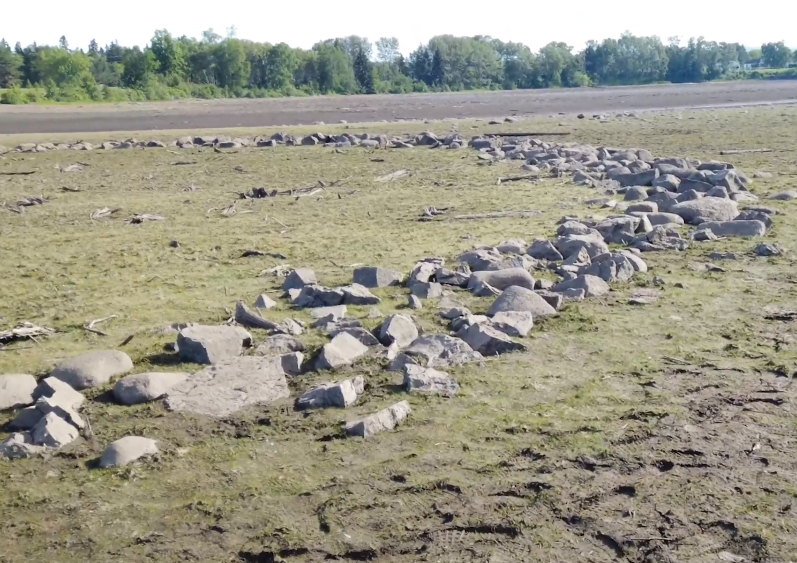THUNDER BAY — The rehabilitation of the Boulevard Lake Dam is giving researchers investigating a 30-metre-wide stone circle on the lake bottom a unique opportunity.
The ring of rocks has been the subject of speculation for many years, with theories about its origin ranging from a prank to a fish trap to a ceremonial Indigenous gathering place.
Now that the rocks have been exposed by the draining of the lake, Lakehead University's anthropology department is working with the faculty of natural resources management to gather data and more closely examine the phenomenon.
The study team is consulting closely with Fort William First Nation, as anthropology professor Scott Hamilton suspects it is a sacred space prepared by the people who lived here well before the arrival of Europeans.
Hamilton previously investigated the site a few years ago when the lake was last drained.
"I didn't really want to mess around anymore until I had the interest and support of the nearest First Nation," he said in an interview Monday. "Fort William First Nation has expressed interest in collaborating with the university to explore it further."
No one is sure how long ago the rocks were laid down, but Hamilton says there are some clues.
Although it almost certainly predates the construction of the dam and the flooding of Boulevard Lake in the early part of the 20th century, he said "It's not really ancient because we can see pieces of wood protruding out from underneath the rocks. So it's a few hundreds of years old rather than a few thousands of years old."
The ring of stones is located on what was previously a dry terrace overlooking the river.
Hamilton said "It's clearly made by human hands but there's a lot of rocks. A lot of sweat equity went into moving those rocks because some are quite big."
He added that there is a range of compelling social reasons why people would go to all that work, one of which is to establish some kind of sacred space.
Since the site overlooks a major set of rapids, Hamilton speculates that it was likely a good site for fishing.
"If it's a good fishery, that's going to attract lots of people every spring, and perhaps every fall. When you get gatherings of people, there's all kinds of social and ceremonial activities. That's a good working hypothesis," he said.
Radiocarbon dating of the pieces of wood beneath the rocks could eventually pinpoint the era in which the ring was built.
The team also hopes to test the soil around the terrace to get a sense of what the vegetation was like before the area was flooded by Boulevard Lake.
For now, it has plenty of data to analyze, after a few days spent at the site on the weekend with specialized scanning equipment and a drone to map and measure it.
The equipment is more advanced than the gear that was used in the earlier study.
Hamilton plans to return later this year with a colleague who specializes in paleoecology.
In the meantime, he's asking members of the public not to disturb the site.
"We have seen that there's people mucking around, moving rocks, plucking rocks out and turning them over...This is always a problem with heritage sites. People being interested will often destroy the thing they're interested in. Yeah, be interested, but respect the place," Hamilton said.
